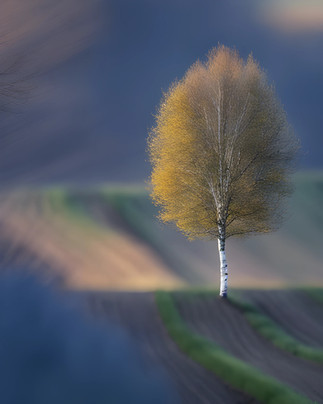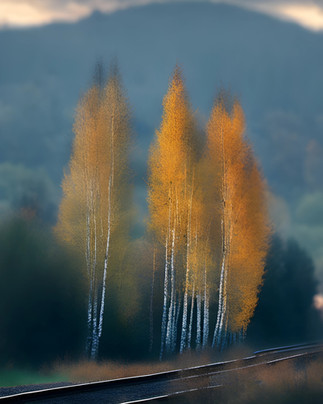Illustration, and finding a voice.
- ronnierennoldson
- Oct 8, 2023
- 2 min read
Updated: Dec 16, 2023
It was over a cup of coffee that a friend, who lives and works in Bristol and Amsterdam, confessed that to help manage the impact of reduced social interaction during covid lockdown she indulged in fantasising about the stories trees might tell, if only they had an appropriate outlet.
Having previously worked on numerous award-winning architecture and landscape projects together I was intrigued enough to ask if I could read one. A few months later, and this time over a summer glass of rosé, she suggested that perhaps we should work on them together.
As an abstract painter, the notion of creating work that actually looks like something is daunting, but the designer in me started with techniques that I normally work; drawing and sketching, creating collages and assemblies with polaroids, bark samples and downloaded photos but I was unable to find a suitable ‘voice’.
A number of tree stories were proposed primarily as a means of engaging young people to better understand the impact that trees have on our lives and stories such as 'a birch tree's tale' ( Betula Pendula) , 'a plane story' (Platanus x acerifolia) and 'an old chestnut' (Castanea ) could be followed by a 'grumpy walnut', 'an ancient yew' and others.
Discussing the project with the graphic-design trained friend I realised that finding this ‘voice’ is part of the compromise designers and clients have to achieve. However, if this project was to be an artistic collaboration, the words would have to inspire the imagery so that the voice reflected the tree and not my artistic sensibilities. (I even took a course in fairy story illustration to better understand what I didnt know and, after 6 hours online, I now possess the required albeit now redundant tools and a better understanding of what where a voice comes from).
While my painting style was inappropriate, my sketches failed to resonate and the collages I created were incoherent. However, an epiphany awaited in the form of an article in the New York Times recounting that a work, generated by AI over months would be allowed to retain the first prize that it had won in an open art exhibition in Colorado.
The premise was that using A.I. to create art is no different from using Photoshop or other digital image-manipulation tools, and that human creativity is still required to come up with the right prompts to generate a piece.
So, armed with this, I experimented and found that the tools did indeed respond to instruction but that multiple iterations using sketches and words were required before the image and the voice that I had in mind would come to life.
So, after much work an initial draft is underway: an image and voice instructed by me but created by others: just how many artists and designers work. (See my blogs on Brigit Riley, Christo , Damian Hurst and David Hockney )
Click on the image below to see a first draft on ISSUU. It needs much more work but its a start and I will enjoy taking the series forward !











Comments